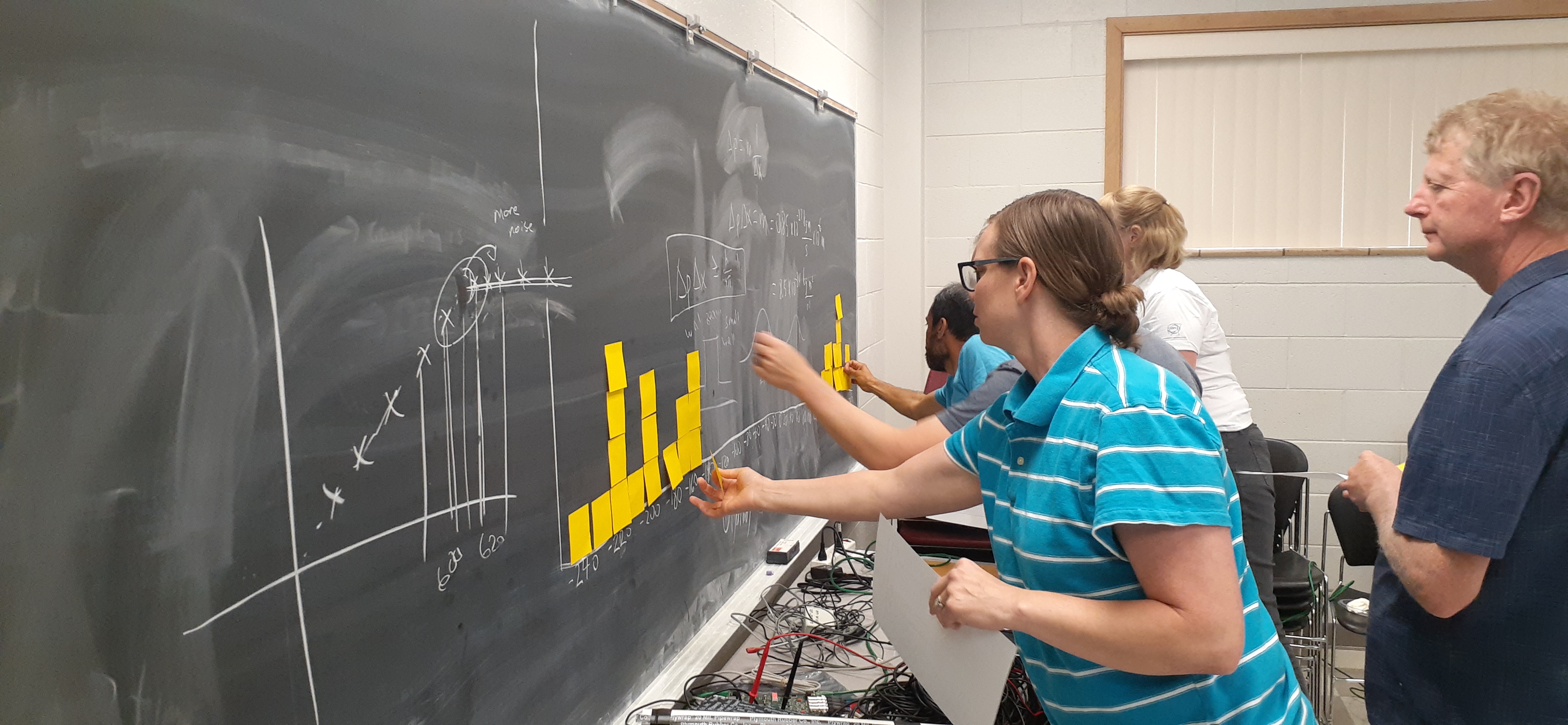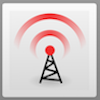Friday Flyer on Monday - January 24, 2022
Welcome to this "excited state" of the Friday Flyer on Monday!

Spotlight on Idaho State University
If you drive north on I-15 from Salt Lake along the Wasatch Front and then through range land of northern Utah and southern Idaho, you will happen upon Pocatello and there you'll find Idaho State University. As you can see from the map, ISU is the only QuarkNet center for quite a few miles in several states and it draws teachers from all around the west.
In summer 2021, Idaho State went back into full in-person mode with a content-packed workshop. It was also a bit of an experimental workshop: this was the season in which some critical Cosmic Ray e-Lab issues were being resolved — and the ISU teachers are deeply involved in cosmic ray studies — so the group started out with tuning up their detectors and then trying some "e-Lab-less" cosmic ray activities. They then tried some new activities under development to increase the quantum physics offerings for QuarkNet and a revival of the OPAL masterclass to study lepton universality. All of this gave the group some interesting work that could be transferred to the classroom and helped the QuarkNet national program.
The e-Lab issues are well-resolved now and the information gathered from the ISU workshop has helped propel new entries on the way to the Data Activities Portfolio. The Idaho State QuarkNet center can take advantage of the pioneering work they did and move forward. Summer 2022 looks promising.


News from QuarkNet Central
QuarkNet Educational Discussions is back for 2022! Join the group at 7 pm CT this Wednesday, January 26, to discuss teaching, physics, and more. QED will meet from there just about every other week until the end of May.
International Masterclasses get closer yet and Circulars have resumed with editions, now weekly, for January 14 and January 21 already out. Orientations start February 5, CERN videoconferences start February 24, and Fermilab videoconferences begin on March 4. Still need to get the ball rolling? No problem: fill out the ramp-up form or contact Ken, Spencer, or Shane. To learn more, choose the MASTERCLASSES button above and follow your interest!
International Muon Week is coming up, March 14-18. This is the chance for you to make cosmic ray measurements with your students and put together your results with those from other schools everywhere. Details are coming! In the mentime, please send questions to Mark Adams.
Reminder for teachers using Google Colab! Starting last month, individuals who use Google Workspace for Education accounts have been restricted from using Colab until their organization's administration enables access in the control panel. Learn more at Google Workspace Admin Help. When Colab is enabled, all students in your organization over the age of 13 have access. If you have questions, contact Adam LaMee.
Upcoming events and dates:
- The Fermilab Family Open House is virtual again this year, which means you, your students, and your family can join in from anywhere. Registration for events is open an ongoing. BONUS: Our own Mark Adams and Dave Hoppert have prepared videos on cosmic rays for the Open House, which you can access right here in English and in Spanish.
- Beamline for Schools (BL4S) registration is open! In BL4S, teams of high school-age students propose their own experiments to run in a CERN beamline. The winning team(s) actually go to CERN to make their measurements with expenses paid by BL4S. (H/T Barbora Gulelova)
- Want to learn more about neutrinos? (Of course you do!) Consider attending the Kavli Institute for Theoretical Physics program Neutrinos as a Portal to New Physics and Astrophysics on March 26, online or in-person. Registration is free and, if you decide to go in-person, financial aid for travel and lodging is available. (H/T Adam LaMee and Quynh Lan Nguyen)

Physics Experiment Roundup
We start our roundup a bit of on the astrophysical side since we now have the largest-ever 3D map of the cosmos thanks to the Dark Energy Survey Instrument, as reported in Fermilab News. That "astro" point-of-view is reinforced, according to Physics Today, by the bubble we all live in, that is, of expanding interstellar gas that drives star formation. Even on the subject of the Higgs, APS Physics ponders its mass and finds an explanation in the multiverse.
Over at the LHC, its Mulder-and-Scully time as MIT News explains how exotic X-particles from the earliest universe have been detected at CMS in the quark-gluon plasma in the heavy ion run. In the run-up to Run 3, we learn in CERN Bulletin of how AI is used to inspect the accelerator tunnels.

Resources
Don Lincoln's third episode on the cosmic microwave background (find the first two in the last issue FF) is now available with the title Puzzling mysteries of the universe. Now you have the complete set!
By the way, if you want the graduate-level treatment on CMB, travel virtually to the ICTP School on Cosmology, January 2021, for Physics of the cosmic microwave background.
Speaking of sets: if you are looking for resources on quantum physics and computing, we have a great collection right here, thanks to Symmetry:
- What is quantum information?
- Looking at a new quantum revolution
- The second quantum revolution
- Playing by the quantum rules
- From bits to qubits
- More than one way to make a qubit
- Going beyond the exascale.
It looks like we now have a handy library on some big questions about the very small.

Just for Fun
Movies can be fun. So let's see how particle physics "collides" with film in a few videos. For starters, see if you can find what is right and wrong with the LHC startup scene from Angels and Demons. (Give the producers at least this: they got the CERN logo right.) Not just CERN: Fermilab was the site of the Star Wars fan film Forgotten Realm produced by a staff physicist. Visitors from other worlds can get in on the action as well, for example with the heat ray from War of the Worlds (2005). Humans can bring their accelerators to other worlds too, as seen in Forbidden Planet.
Let's leave off with a final video with 50 fun physics facts. See you in two weeks!
QuarkNet Staff:
Mark Adams: adams@fnal.gov
Ken Cecire: kcecire@nd.edu
Spencer Pasero: spasero@fnal.gov
Shane Wood: swood5@nd.edu
